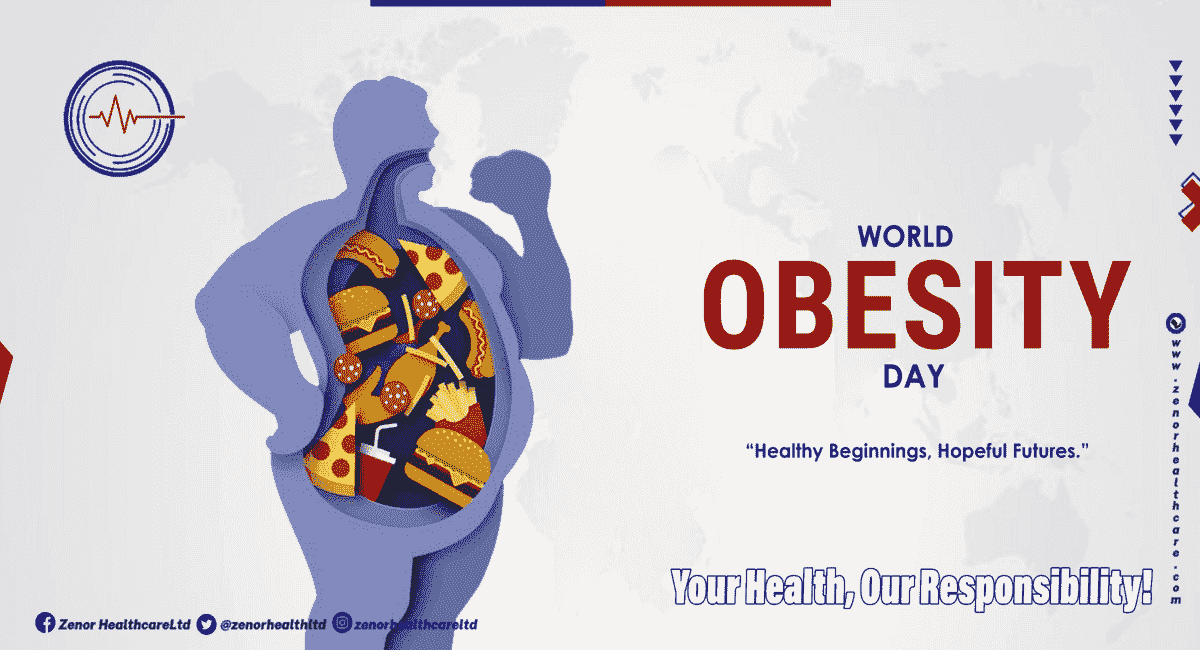
Dear Readers,
Today, March 4th, marks World Obesity Day—a global initiative
aimed at raising awareness about the growing epidemic of obesity and its impact on health.
Obesity is not just a cosmetic concern; it is a chronic medical condition that significantly
increases the risk of serious diseases such as diabetes, cardiovascular disease,
and certain cancers. Let’s take a closer look at what
obesity is, its causes, types, diagnosis, and management strategies.
What is Obesity?
Obesity is a complex medical condition characterized by excessive body fat accumulation,
which can negatively affect overall health. It is commonly measured using the Body Mass Index (BMI):
· Normal weight: BMI 18.5–24.9
· Overweight: BMI 25.0–29.9
· Obesity (Class I): BMI 30.0–34.9
· Severe Obesity (Class II): BMI 35.0–39.9
· Morbid Obesity (Class III): BMI ≥ 40
Obesity is associated with metabolic disorders, reduced quality of life, and increased mortality rates if left unmanaged.
Causes of Obesity
Obesity results from a combination of genetic, environmental, behavioral,
and metabolic factors. Some of the key causes include:
1. Poor Dietary Habits – Excessive intake of high-calorie, processed foods rich in sugars and unhealthy fats.
2. Physical Inactivity – A sedentary lifestyle contributes to weight gain and metabolic disorders.
3. Genetics – Family history can predispose individuals to obesity due to inherited metabolic tendencies.
4. Medical Conditions – Conditions like hypothyroidism, Cushing’s syndrome, and polycystic ovary syndrome (PCOS) can lead to weight gain.
Types of Obesity
Obesity can be classified based on fat distribution and underlying causes:
1. Generalized Obesity – Characterized by excess fat accumulation throughout the body.
2. Abdominal (Central) Obesity – Fat is primarily stored around the abdomen and internal organs, increasing the risk of metabolic diseases.
3. Visceral Obesity – Fat accumulates around internal organs, leading to conditions like insulin resistance and cardiovascular diseases.
Diagnosis of Obesity
Healthcare professionals use various methods to diagnose obesity:
1. Body Mass Index (BMI) – A simple screening tool for categorizing weight status.
2. Waist Circumference – Measures central obesity; high risk if >102 cm in men and >88 cm in women.
3. Blood Tests – To assess metabolic health, including cholesterol levels, blood glucose, and hormone levels.
Management of Obesity
Obesity management requires a multidisciplinary approach,
including lifestyle modifications, medical interventions, and, in some cases, surgical procedures.
Lifestyle Modifications:
· Healthy Diet: A balanced diet rich in whole foods, lean proteins, fiber, and healthy fats while reducing processed foods and sugary drinks.
· Regular Exercise: At least 150–300 minutes of moderate-intensity aerobic activity per week, along with strength training exercises.
· Behavioral Therapy: Addressing emotional eating, stress management, and developing healthy habits.
Tips to Prevent Obesity
Choosing a healthier diet enriched with fruits, vegetables, healthy fats and protein.
Limiting unhealthy foods such as potatoes, sweets, red and processed meat.
Limiting unhealthy beverages (sugary drinks and sodas etc.)
· Avoiding sedentary lifestyle, physical activity by limiting screen time and other "sit time".
Conclusion
Obesity is a significant public health concern that requires urgent attention and action.
Prevention is key, and through healthy lifestyle choices, regular physical activity,
and appropriate medical guidance, obesity can be managed effectively.
On this World Obesity Day, let us commit to promoting awareness,
supporting those struggling with obesity, and working towards a healthier future.
For more information, professional guidance, or support in managing obesity, consult a healthcare provider.
Stay Healthy, Stay Informed!
Best Regards,
Zenor Healthcare Ltd
Medical Unit
ALSO READ

